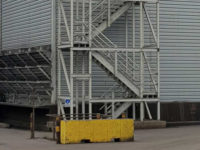The ASHRAE 2023 Handbook HVAC Applications is now out, and we need to get ready to revise it again. Updated every four years, this volume is significantly larger than its previous editions, in part due to a new Chapter 66, In-Room Air Cleaners. The process of revising each of the four handbooks begins all over again almost as soon as the Handbook is published and distributed.
That said, you won’t find in this year’s Handbook the topics decarbonization or electrification discussed, and yet these two subjects are fast becoming important issues for the HVAC building industry. In my February 2023 column titled “Design Engineering: Talk the Talk and Walk the Walk,” I highlighted these two challenges for the HVAC design engineer to embrace. Quite often, design engineers will simply use the same application from the last job engineered — e.g., commercial office space — when assigned a new commercial project to produce the contract documents. It is simple to do, reusing several of the previous contract drawing detail sheets and automatic temperature control (ATC) sequence of operation diagram drawings. This also provides the consultant with an opportunity to increase their profit margin for the project. For the most part, the decision on which HVAC application will be made by the design engineer with little or no input from the rest of the design team and/or the building owner.
To consider decarbonization and electrification, the decision-making requires more team input. One has to stop and think of “who I reach out to for their input on the optimum HVAC application for the job” if the design engineer is going to be proactive with including the global environment goals to the building interior environment. There is no standardized format to incorporate decarbonization and electrification features into the building application and maybe that is a topic that should be included in the conceptual phase of the building program.
Leadership in Energy and Environmental Design (LEED) format includes an owner’s project requirements (OPR) document and the LEED Scorecard that are a good start to open the conversation, but this is going to require several participants, e.g., HVAC design engineer, architect, etc. Each one is going to want to be paid for this additional service. Also, decarbonization and electrification compliance doesn’t jump out when reading the scorecard. Still, it seems like this will be a good start to help guide the design team, as well as the building owner, with the selection of the optimum application for the project.
More importantly, and following LEED’s scorecard format, maybe the ASHRAE HVAC Application Handbook would consider organizing a technical committee to draft a decarbonization and electrification scorecard to guide the design engineer, as well as each of the principals responsible for creating and maintaining standards and/or certification compliances?
I’ve always found scorecards checklists to be a simplistic method for analysis and decision making. The 2020 HVAC Systems and Equipment Handbook, Chapter 1, HVAC System Analysis and Selection, has its own scorecard (Table 1) for design engineers to use to determine the optimum HVAC system choosing three different types of systems. Decarbonizing items could be organized and then electrification added to make a statement to others that these two topics where in the consideration equation and not just two words touched on in the “selection report” to the client funding the building program.
Another topic that should be considered in future Handbooks is the lessons-learned from the pandemic. At the ASHRAE web site, www.ashrae.org one can read about the 2019-2025 ASHRAE Strategic Plan At-A-Glance. I think some of its “tidbits of pertinent information” should be included in the Application Handbook in the Building Operation and Management categories, Chapter 37 through 44. There, one can find references and links to more detailed explanation of a topic, e.g., Resiliency and Decarbonization in Buildings.
In closing this column this month, let me remind the readers that there are 4-ASHRAE Handbooks:
- 2023 – HVAC Applications
- 2022 – Refrigeration
- 2021 – Fundamentals
- 2020 – HVAC Systems and Equipment
I’ve been a Handbook revisor for many, many years and continue to contribute my experience to the updating of the HVAC Application Handbook and the HVAC Systems and Equipment Handbook. I will continue to volunteer my time to keeping these manuals current. I encourage others, especially those who have recently retired and want to stay current with the HVAC industry that they had been employed in for so many years, to reach out to ASHRAE and offer to volunteer to be a reviser. The younger generations can use your input, the building industry will appreciate it, and global warming needs it!





